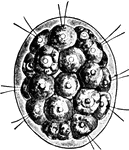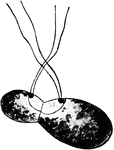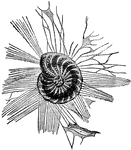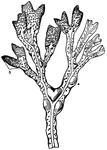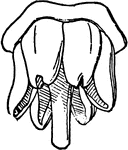The Algae ClipArt gallery offers 120 images of these eukaryotic organisms that lack many organs found in land plants. The most known and largest examples are seaweeds.
Oarweed
Oarweed or Tangle (Laminaria digitata) is a species of kelp common to the British Isles and Northeast…

Laminaria Saccharina
Laminaria saccharina belongs to the group Laminariæ, a group of algæ belonging to the Phæosporeæ,…

Marine Algae of New England
Similar section of a sterile conceptacle, containing slender antheridia.
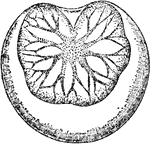
Noctiluca Scintillans
An illustration of the Noctiluca scintillans. Noctiluca scintillans, also published as Noctiluca miliaris,…
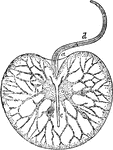
Aboral Side View of the Noctiluca Scintillans
An illustration of the aboral side view of the Noctiluca scintillans. Noctiluca scintillans, also published…

Lateral View of Noctiluca Scintillans
An illustration of the lateral view of the Noctiluca scintillans. Noctiluca scintillans, also published…
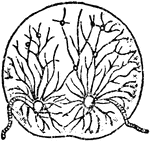
Stage One in the Fission of Noctiluca Scintillans
An illustration of the first stage of fission in the Noctiluca scintillans. Noctiluca scintillans, also…

Stage Two in the Fission of Noctiluca Scintillans
An illustration of the second stage of fission in the Noctiluca scintillans. Noctiluca scintillans,…

Young Stage of Noctiluca Scintillans
An illustration of the young stages of Noctiluca scintillans. Noctiluca scintillans, also published…
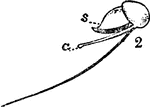
Young Stage of Noctiluca Scintillans
An illustration of the young stages of Noctiluca scintillans. Noctiluca scintillans, also published…

Noctilucales
An illustration of Noticulales with buds. The Noctilucales are a peculiar order of marine dinoflagellates.…
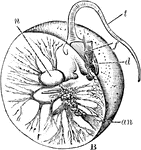
Noctilucales
An illustration of Noticulales in section: an, anus; d, denticle; f, flagellum; t, tentacle. The Noctilucales…

Noctilucales
The Noctilucales are a peculiar order of marine dinoflagellates. They differ from most others in that…
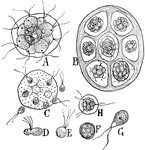
Pandorina
This illustration shows the features in the life history of Pandorina: A, a colony of plants. B, each…
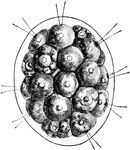
Pandorina
Pandorina, a one-celled, fresh water form, is a genus of green algae composed of 8, 16, or sometimes…
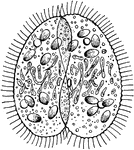
Paramecium
The paramecium is a one-celled ciliate in the Kingdom Protista. These two are separating after conjugation.

Paramecium
Paramecium are one-celled organisms in the Protista kingdom. They are slipper-shaped, nearly transparent…

Paramecium
Paramecium are one-celled organisms in the Protista kingdom. They are slipper-shaped, nearly transparent…

Paramecium
Paramecium are one-celled organisms in the Protista kingdom. They are slipper-shaped, nearly transparent…
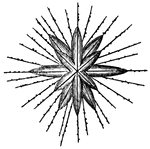
Polycystina
Polycystina are microscopic in size and possess a structureless sarcode-body, enclosed in a perforated…
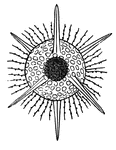
Polycystina
Polycystina are microscopic in size and possess a structureless sarcode-body, enclosed in a perforated…

Freshwater Polyp
"Hydra viridis, the freshwater polyp. The animal is attached to the stem of a plant, and is represented…

Protococcus
A genus of single-celled algae often forming a yellowish-green stratum on trees' damp walls, and in…
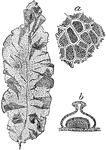
Marine Red Algae
"Grinnellia Americana. a, structure of the leaf; b, vertical section of a conceptacle, showing the chains…
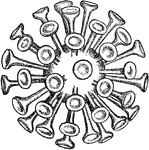
Rhabdosphere
When coccoliths are covered with rods, they are called rhabdoliths, and form a rhabdosphere.

Fructifying Tip of a Frond of Rockweed
Known as rockweed or bladder wrack, this species of seaweed is in the Fucaceae family of brown algae.…

Rockweed Section
"Transverse section of conceptacle of a rockweed (Fucus platycarpus). h, hairs; a, antheridia; o, oogonia."…

Sertularia
Sertularia are members of the Protista kingdom. It is an example of another group of the hyroid zoophytes,…

Sertularia
Sertularia are members of the Protista kingdom. It is an example of another group of the hyroid zoophytes,…

Sertularia
Sertularia are members of the Protista kingdom. This is an example of the egg-producing gonophore.

Spirogyra
This illustration shows the sexual reproduction of Spirogyra: A, in lower portion of figure formation…

Common Stonewort
"1. Chara vulgaris; 2. a portion of a branch with a nucule and globule; 3. the globule more magnified;…

Tubularia
Tubularia are members of the Protista kingdom. The pipe-coralline (Tubularia) is an example of another…

Vaucheria
A Vaucheria; single cell grown on into a much-branched thread; the end of some branches enlarging, and…

Volvox
These protozoans form colonies. The large spherical colonies of Volvox globator are composed of several…
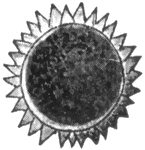
Volvox
These protozoans form colonies. The large spherical colonies of Volvox globator are composed of several…
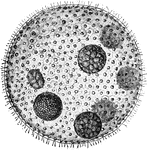
Volvox
Volvox is one of the best-known chlorophytes, a division of green algae, and is the most developed in…
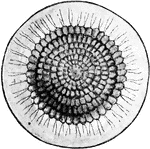
Volvox
Volvox is one of the best-known chlorophytes, a division of green algae, and is the most developed in…
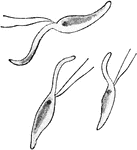
Volvox
Under certain circumstances some cells may store up food matters beome eggs, while others, known as…
Vorticella
Vorticella is a protozoan. Except for when young, it is usually found attached to dead leaves or sticks…
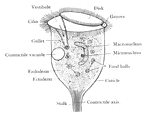
Vorticella
The vorticella is an interesting protozoan. It is found on submerged stems and leaves in stagnant water,…

Vorticella
Vorticella are members of the Protista kingdom. They are often found in stagnant pools, attached to…

Vorticella
Vorticella are members of the Protista kingdom. They are often found in stagnant pools, attached to…
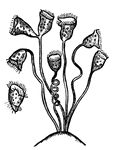
Vorticella
Vorticella are members of the Protista kingdom. They are often found in stagnant pools, attached to…

Zygnematales
This illustration shows two common forms of the Zygnematales: A, Spirogyra- n, nucleus; p, pyrenoid.…

